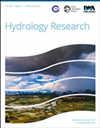量化气候变化和人类活动对渭河流域生态水文状况的影响
IF 2.4
4区 环境科学与生态学
Q2 Environmental Science
引用次数: 5
摘要
气候变化和人为干预明显改变了生态水文状况。迫切需要对生态水文变化进行定量评估和归因。在本研究中,我们评估了渭河流域生态水文状况的各种属性。首先,考察了水文要素的变化趋势和变化点分析,并基于变入渗能力模型再现了自然流量。然后,选择最具生态相关性的水文指标(ERHI),并将其与生态赤字和生态盈余指标相结合,以评估生态水文状况的变化程度。最后,使用“模拟-观测比较”方法对生态水文变化的相对贡献进行了量化。结果表明:(1)WRB的流量呈显著下降趋势(p<0.01),1990年确定了流量序列的显著变化点(p<0.01)。(2) 选取7个具有代表性的水文变化指标作为ERHI。(3) 在人类诱发时期(1991-2017),人类活动是生态水文变化的主导因素,也是ERHI指数、生态赤字和生态盈余指标变化的主导因子。总的来说,拟议的框架可以提高对环境变化下生态水文状况变化驱动力的理解。本文章由计算机程序翻译,如有差异,请以英文原文为准。
Quantifying the impact of climate change and human activities on the eco-hydrological regimes of the Weihe River Basin, Northwest China
Climate change and anthropogenic interventions have obviously altered the eco-hydrological regimes. A quantitative evaluation and attribution of the eco-hydrological alterations are urgently required. In this study, we evaluated the various attributions of eco-hydrological regimes in the Weihe River Basin (WRB). Firstly, the trends and change-point analysis of hydrological elements were examined, and the natural streamflow was reproduced based on the variable infiltration capacity model. Then, the most ecologically relevant hydrological indicators (ERHIs) were selected and combined with the eco-deficit and eco-surplus indicators to assess the degree of eco-hydrological regime alterations. Finally, the relative contributions to eco-hydrological alterations were quantified using the ‘simulated–observed comparison’ method. The results showed that (1) the streamflow of the WRB exhibited significant decreasing trends (p < 0.01), and a significant change point (p < 0.01) of the streamflow series was identified in 1990. (2) Seven representative indicators of hydrological alteration were selected as ERHIs. (3) During the human-induced period (1991–2017), human activities were the dominant factors in the eco-hydrological alterations as well as the variations of the ERHI indexes and the eco-deficit and eco-surplus metrics. Overall, the proposed framework may improve the understanding of the driving forces of eco-hydrological regime alterations under a changing environment.
求助全文
通过发布文献求助,成功后即可免费获取论文全文。
去求助
来源期刊

Hydrology Research
Environmental Science-Water Science and Technology
CiteScore
5.30
自引率
7.40%
发文量
70
审稿时长
17 weeks
期刊介绍:
Hydrology Research provides international coverage on all aspects of hydrology in its widest sense, and welcomes the submission of papers from across the subject. While emphasis is placed on studies of the hydrological cycle, the Journal also covers the physics and chemistry of water. Hydrology Research is intended to be a link between basic hydrological research and the practical application of scientific results within the broad field of water management.
 求助内容:
求助内容: 应助结果提醒方式:
应助结果提醒方式:


